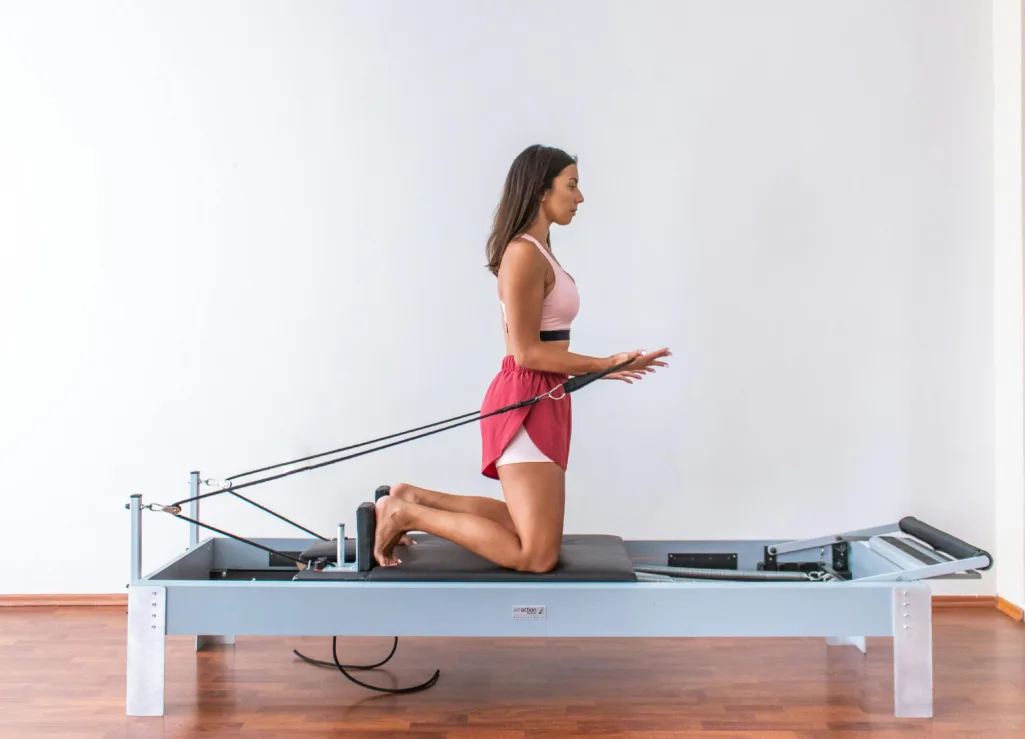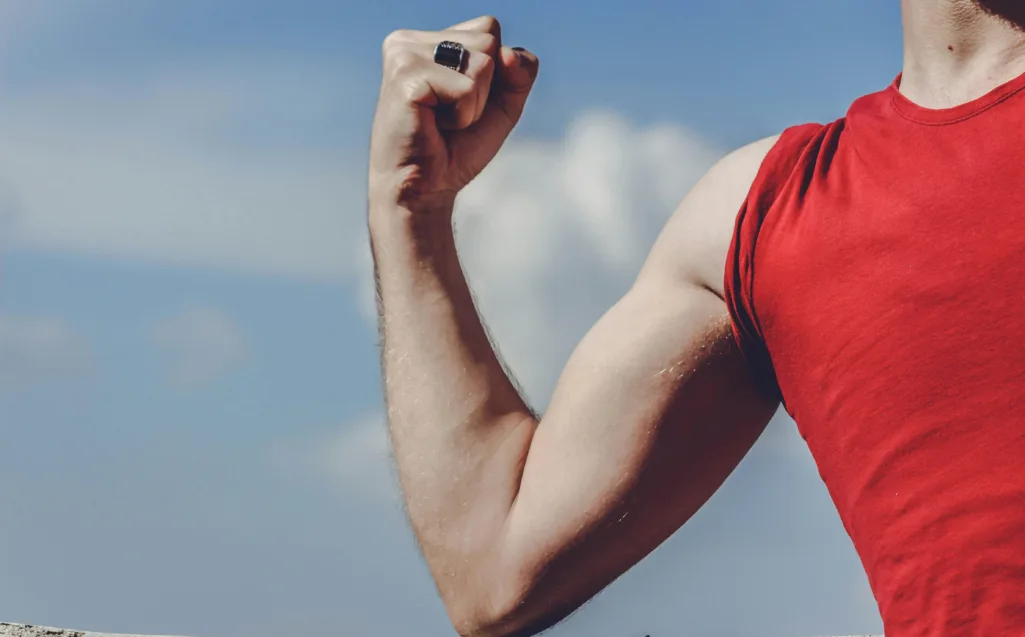Yoga & Pilates
Lean and Toned: Achieving Weight Loss and Muscle Definition with Pilates
Welcome to the world of Pilates, where you can achieve more than just a lean and toned physique.
Pilates, developed by Joseph Pilates in the early 20th century, is a low-impact workout that focuses on improving muscle tone and core stability, leading to weight loss and muscle definition.
It offers a holistic approach to fitness that targets both the body and the mind.
Unlike high-intensity workouts that leave you breathless and drenched in sweat, Pilates is a gentle yet effective exercise that strengthens and sculpts your muscles through controlled movements.
Join us on this as we explore the world of Pilates and discover how this exercise regimen can help you unlock your full physical and mental potential.
From understanding what Pilates is and how it works, to its effectiveness in weight loss and muscle definition, we’ll provide you with all the information you need to embark on your Pilates journey.

Key Takeaways:
- Pilates is a low-impact exercise that focuses on improving muscle tone and core stability.
- It offers various types of exercises that target posture, balance, and flexibility.
- Pilates is effective for weight loss and muscle definition, but it should be combined with a healthy diet, cardiovascular exercise, and other forms of physical activity for optimal results.
- Pilates provides benefits beyond weight loss, including improved muscle tone, increased flexibility, boosted stability and endurance, promotion of healing and posture improvement, stress management, better sleep, and increased energy.
- Consistent practice and dedication to Pilates can help individuals achieve a lean and toned physique.
Table of Contents
What is Pilates?
Pilates is a form of exercise developed by Joseph Pilates in the early 20th century. It focuses on improving muscle tone and core stability through small, technical movements.
The exercises in Pilates are designed to lengthen and sculpt muscles for a stronger body. It is a low-impact exercise that targets strength, mobility, and alignment within the body. The primary muscle worked in Pilates is the core, but other muscles are also trained in the process.
How Pilates Works
Pilates is a versatile form of exercise that can be performed on an exercise mat or using a specialized apparatus known as the Reformer.
This workout method focuses on improving posture, enhancing balance, and increasing flexibility.
When practicing Pilates, there are seven general types of exercises that target different areas of the body, including the core, arms, legs, and glutes. Participants typically perform around 50 repetitive movements that aim to strengthen the muscles.
While these exercises may appear simple at first, they become progressively challenging as the class progresses and the muscles fatigue. Pilates instructors often offer modifications for beginners or those with specific needs, ensuring that each participant can benefit from the workout.
The Role of the Exercise Mat and Reformer

The exercise mat is an essential tool for performing Pilates. It provides a cushioned surface that allows for comfortable and controlled movements throughout the workout. The mat also helps enhance stability and support during exercises.

For a more advanced Pilates experience, the Reformer apparatus is used.
The Reformer consists of a sliding carriage, springs, straps, and a footbar, offering resistance and added challenge to the exercises.
It allows for greater variety and versatility in movement, targeting different muscle groups and increasing overall muscle strength.
The Pilates Approach to Posture, Balance, and Flexibility
Pilates places great emphasis on posture, training individuals to maintain proper alignment and engage the core muscles for stability.
Through targeted exercises, Pilates helps correct common postural imbalances and encourages a more upright and balanced stance.
Furthermore, Pilates exercises incorporate elements of balance training by challenging individuals to maintain control and stability while performing various movements and positions. This helps improve overall body awareness and coordination.
Flexibility is another key component of Pilates. The exercises focus on lengthening and elongating muscles, enhancing joint mobility, and increasing the overall range of motion. This can contribute to improved functional movement and reduced risk of injury.
Is Pilates good for weight loss?

Pilates is an effective exercise for weight loss, offering unique benefits compared to high-intensity workouts that leave you panting and sweating.
As a low-impact exercise, Pilates puts less stress on joints and muscles, making it suitable for beginners or individuals with limited mobility.
While you may not burn hundreds of calories during a Pilates class, it can still contribute to weight loss in several ways:
- Increased heart rate: Pilates raises your heart rate, activating your cardiovascular system and promoting calorie burning.
- Sweating: Though not as intense as other workouts, Pilates can still make you sweat, helping to eliminate toxins and stimulate your metabolism.
- Improved body function: Pilates engages multiple muscle groups, promoting better overall body function and increasing energy expenditure.
- Building lean muscle: Pilates exercises target specific muscle groups, helping to build lean muscle mass. More muscle means a higher resting metabolic rate, which aids in burning fat even outside of your Pilates sessions.
Ultimately, Pilates should be seen as part of a comprehensive approach to weight loss and overall fitness.
Combining Pilates with a healthy diet, regular cardiovascular exercise, and strength training can optimize your weight loss journey and help you achieve your desired results.
Benefits of Pilates Beyond Weight Loss
Pilates offers numerous benefits that go beyond weight loss. Regular practice of Pilates can improve muscle tone, flexibility, stability, endurance, healing, posture, stress management, sleep, and energy levels.
Muscle Tone

Pilates targets various muscles in the body, including the core muscles, abdominals, lower back, hip muscles, glutes, inner thigh muscles, and upper back.
The exercises in pilates help to strengthen and tone these muscles, resulting in improved muscle definition and a leaner appearance.
Flexibility
By mobilizing joints and increasing muscle stretch, pilates improves flexibility. The controlled movements and stretches in Pilates help to lengthen muscles and improve the range of motion.
This can enhance athletic performance, prevent injuries, and promote overall body flexibility.
Stability and Endurance
Pilates involves repetitive movements and resistance training, which help to boost stability and endurance. By challenging the body’s strength and improving muscle control, pilates increases overall fitness and enhances muscular endurance.
This can support day-to-day activities and physical performance in various sports and activities.
Healing and Rehabilitation
Pilates is often used as a form of healing and rehabilitation due to its low-impact nature and focus on joint mobility and muscle strengthening. The controlled movements and emphasis on proper alignment make pilates a safe and effective exercise for individuals recovering from injuries or dealing with chronic pain.
It can help improve muscular imbalances, restore functional movement, and support the healing process.
Posture Improvement
Poor posture can lead to back pain, fatigue, and other musculoskeletal issues. Regular practice of pilates can help improve posture by strengthening the core muscles and promoting proper alignment of the spine.
By developing strong postural muscles, pilates can alleviate back pain and create a more balanced and upright posture.
Stress Management
Pilates combines physical movement with mental focus and concentration, making it a great stress management tool. The mind-body aspect of Pilates helps to calm the mind, reduce stress levels, and promote relaxation.
Sleep and Energy
The mind-body connection in pilates, along with the physical benefits, can contribute to better sleep quality.
Additionally, regular practice of pilates can increase energy levels and improve overall vitality and well-being.
Does Pilates Help with Muscle Definition?
Pilates can be a helpful tool for achieving muscle definition, but it’s important to understand that muscle definition is not solely determined by Pilates alone.
To achieve defined muscles, you need to consider factors such as body fat percentage, diet, cardio exercise, and strength training. Pilates itself can contribute to overall muscle strengthening, stability, flexibility, and posture improvement.
Muscle definition is the result of having a low body fat percentage and increased lean muscle mass. Pilates, being a low-impact exercise, helps to strengthen muscles without causing excessive bulk.
It focuses on controlled movements that target specific muscle groups, leading to improved muscle tone and definition.
However, it’s crucial to combine Pilates with other exercises and a balanced diet to create a calorie deficit for weight loss and muscle definition.
Cardio exercises, such as running or cycling, help burn calories and reduce body fat percentage. Additionally, strength training exercises, like weightlifting, stimulate muscle growth and increase lean muscle mass.
| Benefits of Pilates for Muscle Definition | Additional Exercises for Muscle Definition |
|---|---|
| Improved muscle tone Enhanced stability and flexibility Better posture Increased overall body strength | Cardio exercises for calorie burning Strength training for muscle growth |
Conclusion
Pilates is a valuable exercise for achieving weight loss and muscle definition.
Pilates can be incorporated into your exercise routine to help you achieve your goals.
However, it is important to have realistic expectations and understand that Pilates alone may not be the sole solution for rapid weight loss or quick muscle definition.
To maximize the benefits of Pilates, it is recommended to combine it with a balanced diet, regular cardiovascular exercise, and strength training. This holistic approach will support your overall health and fitness goals.
Pilates offers numerous benefits beyond weight loss and muscle definition. It improves muscle tone, flexibility, stability, and posture, while also providing stress management and energy-boosting benefits.
With consistent practice and dedication, Pilates can help you achieve a lean and toned physique, while also enhancing your overall well-being.
FAQ
What is Pilates?
Pilates is a form of exercise developed by Joseph Pilates in the early 20th century. It focuses on improving muscle tone and core stability through small, technical movements.
The exercises in Pilates are designed to lengthen and sculpt muscles for a stronger body. It is a low-impact exercise that targets strength, mobility, and alignment within the body.
How Pilates Works
Pilates can be performed on an exercise mat or using an apparatus called the Reformer. It aims to target posture, balance, and flexibility.
There are seven general types of Pilates exercises that can be taught and performed. Participants perform around 50 repetitive exercises that aim to increase muscle strength. While these movements may not seem difficult at first, they become challenging as the class progresses and muscles fatigue.
Modifications are often provided by instructors for beginners or those needing them.
Is Pilates good for weight loss?
Pilates is an effective exercise for weight loss, but it differs from high-intensity workouts that result in panting and sweating. Pilates is a low-impact exercise that puts less stress on joints and muscles, making it suitable for beginners or those with limited mobility.
While you may not burn hundreds of calories during a Pilates class, it can help with weight loss by increasing heart rate, sweating, improving body function, and building lean muscle, which aids in burning fat.
It is important to note that weight loss should not be the sole focus, as Pilates also helps build lean muscle and improve overall body composition.
What are the benefits of Pilates beyond weight loss?
Pilates offers numerous benefits beyond weight loss. It helps improve muscle tone, particularly in the core muscles, abdominals, lower back, hip muscles, glutes, inner thigh muscles, and upper back.
Regular practice of Pilates also improves flexibility by mobilizing joints and increasing muscle stretch. It boosts stability and endurance through repetitive movements and resistance training.
Pilates is often used as a form of healing and rehabilitation due to its low-impact nature and focus on joint mobility and muscle strengthening.
Improved posture is another benefit of Pilates, which can alleviate back pain and fatigue from sitting or driving.
Pilates is also effective in managing stress, promoting better sleep, and increasing overall energy levels.
Does Pilates help with muscle definition?
Pilates can help with muscle definition, but it is important to understand the role of body fat percentage in achieving defined muscles.
Muscle definition is the result of low body fat and lean muscle mass. While Pilates alone may not lead to quick-toned muscles, it does contribute to overall muscle strengthening, stability, flexibility, and posture improvement.
To achieve muscle definition with Pilates, it is important to combine it with a balanced diet, cardiovascular exercise, and strength training.
Pilates workouts burn calories, but additional exercises, such as cardio routines, are needed to create a calorie deficit for weight loss and muscle definition.
What should I expect from Pilates?
Pilates is a valuable tool for achieving weight loss and muscle definition. It is a low-impact exercise that can be incorporated into an exercise routine for various fitness levels.
While Pilates alone may not be the sole solution for weight loss goals or quick muscle definition, it offers significant benefits when combined with a balanced diet, cardiovascular exercise, and strength training.
Realistic expectations should be set, understanding that Pilates is a long-term commitment that contributes to overall health, muscle tone, flexibility, stability, and stress management.
With consistent practice and dedication, Pilates can help individuals achieve a lean and toned physique.



